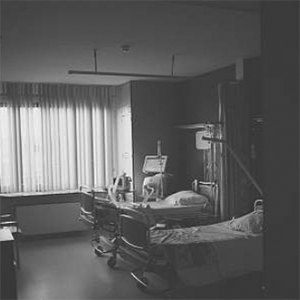The practical role of the respiratory therapist in the standard apnea test procedure for declaration of death via neurologic criteria in adults
Keywords:
brain, apnea, death, respiratory therapy, neurologic, timeout, criteria, critical, neurocriticalAbstract
Introduction: Respiratory therapists (RTs) in the intensive care unit can at times find themselves involved in and assisting during the performance of the apnea test (ApT). The ApT is a clinically complex procedure and is the last part of the clinical declaration of death by neurologic criteria (DNC) protocol and requires close collaboration between the physicians and the RTs. As such, the ApT should be performed with the upmost attention to detail.
Context and Aims: The RTs need to be versed on the intricacies of the ApT. Except in very large medical centers, the ApT is not a procedure performed with high enough frequency as to maintain high level of proficiency. For a successful ApT, structured knowledge and preparation is paramount. This publication attempts to fill that gap, for adult hospitalized patients not on ECMO (extracorporeal membrane oxygenation). To generate this report, we make use of the published guidelines, and our personal experience on performing ApTs in large medical centers.
Conclusion: We provide a structure by means of a checklist, from the RTs’ perspective, to guide and help them lead on the efficient performance of the ApT.
References
Greer DM, Shemie SD, Lewis A, Torrance S, Varelas P, Goldenberg FD, et al. Determination of brain death/death by neurologic criteria: The World Brain Death Project. JAMA 2020;324:1078–97.
Ropper AH, Kennedy SK, Russell L. Apnea testing in the diagnosis of brain death. Clinical and physiological observations. J Neurosurg 1981;55:942–6.
Belsh JM, Blatt R, Schiffman PL. Apnea testing in brain death. Arch Intern Med 1986;146:2385-8.
Scott JB, Gentile MA, Bennett SN, Couture M, MacIntyre NR. Apnea testing during brain death assessment: a review of clinical practice and published literature. Respir Care 2013;58:532-8.
Vukoja M, Dong Y, Adhikari NKJ, Schultz MJ, Arabi YM, Martin-Loeches I, et al. Checklist for early recognition and treatment of acute illness and injury: An exploratory multicenter international quality-improvement study in the ICUs with variable resources. Crit Care Med 2021;49:e598-612.
Wijdicks EFM, Varelas PN, Gronseth GS, Greer DM. Evidence-based guideline update: determining brain death in adults: report of the Quality Standards Subcommittee of the American Academy of Neurology. Neurology 2010;74:1911-8.
Busl KM, Lewis A, Varelas PN. Apnea Testing for the determination of brain death: A systematic scoping review. Neurocrit Care 2021;34:608–20.
National Conference of Commissioners on Uniform State Laws. Revised Uniform Anatomical Gift Act (2006) (Last Revised or Amended in 2009) [Internet]. 2006 [cited 2021 Dec 7]. Available from: https://www.uniformlaws.org/HigherLogic/System/DownloadDocumentFile.ashx?DocumentFileKey=021749ee-b7d6-884f-029f-d6e45c22a20c&forceDialog=0
The Joint Commission [Internet]. The Universal Protocol. 2021 [cited 2021 Dec 7]. Available from: https://www.jointcommission.org/standards/universal-protocol/

Published
Issue
Section
License
Copyright (c) 2022 The Author(s)

This work is licensed under a Creative Commons Attribution-NonCommercial 4.0 International License.
Mattioli 1885 has chosen to apply the Creative Commons Attribution NonCommercial 4.0 International License (CC BY-NC 4.0) to all manuscripts to be published.




